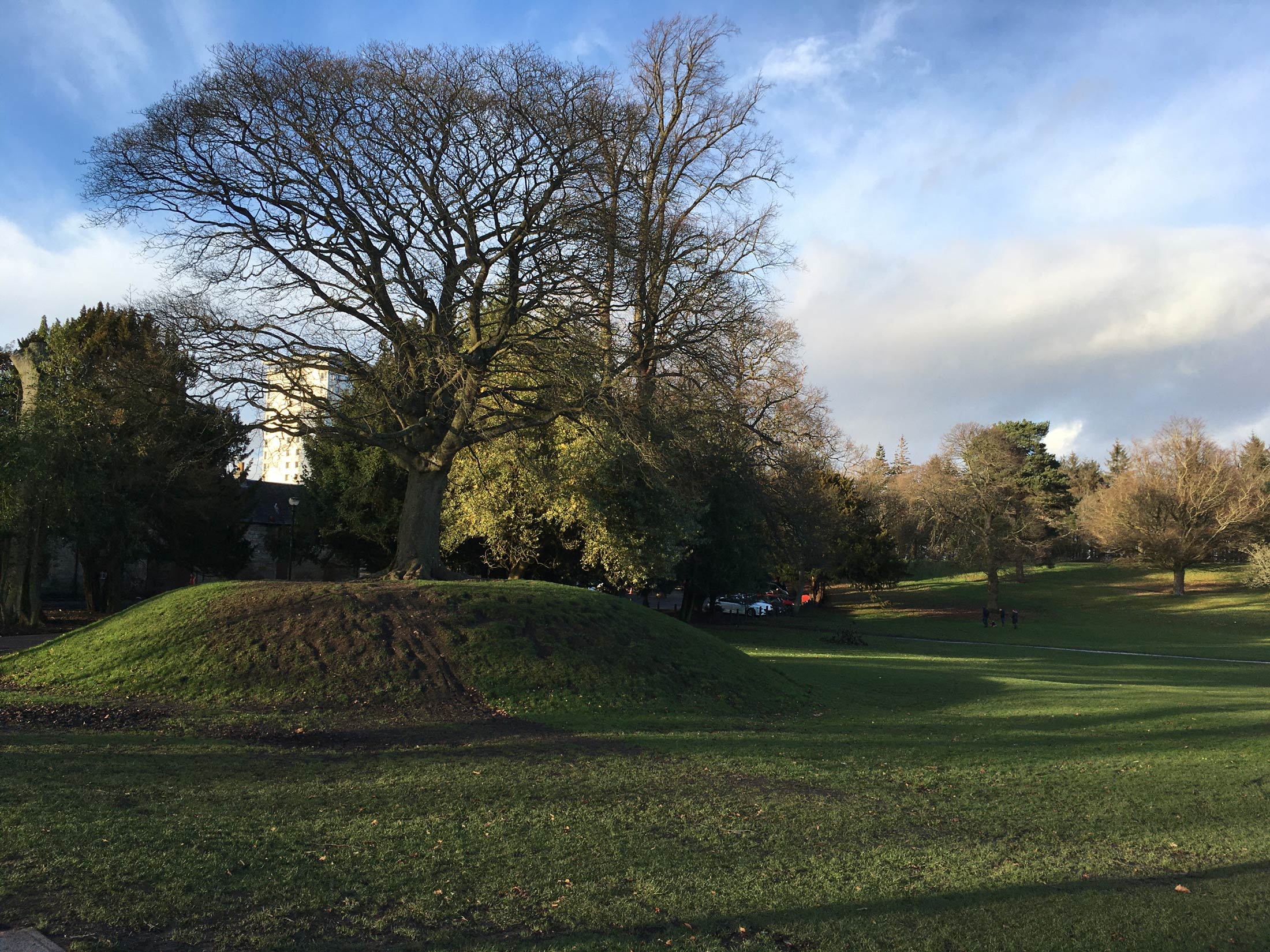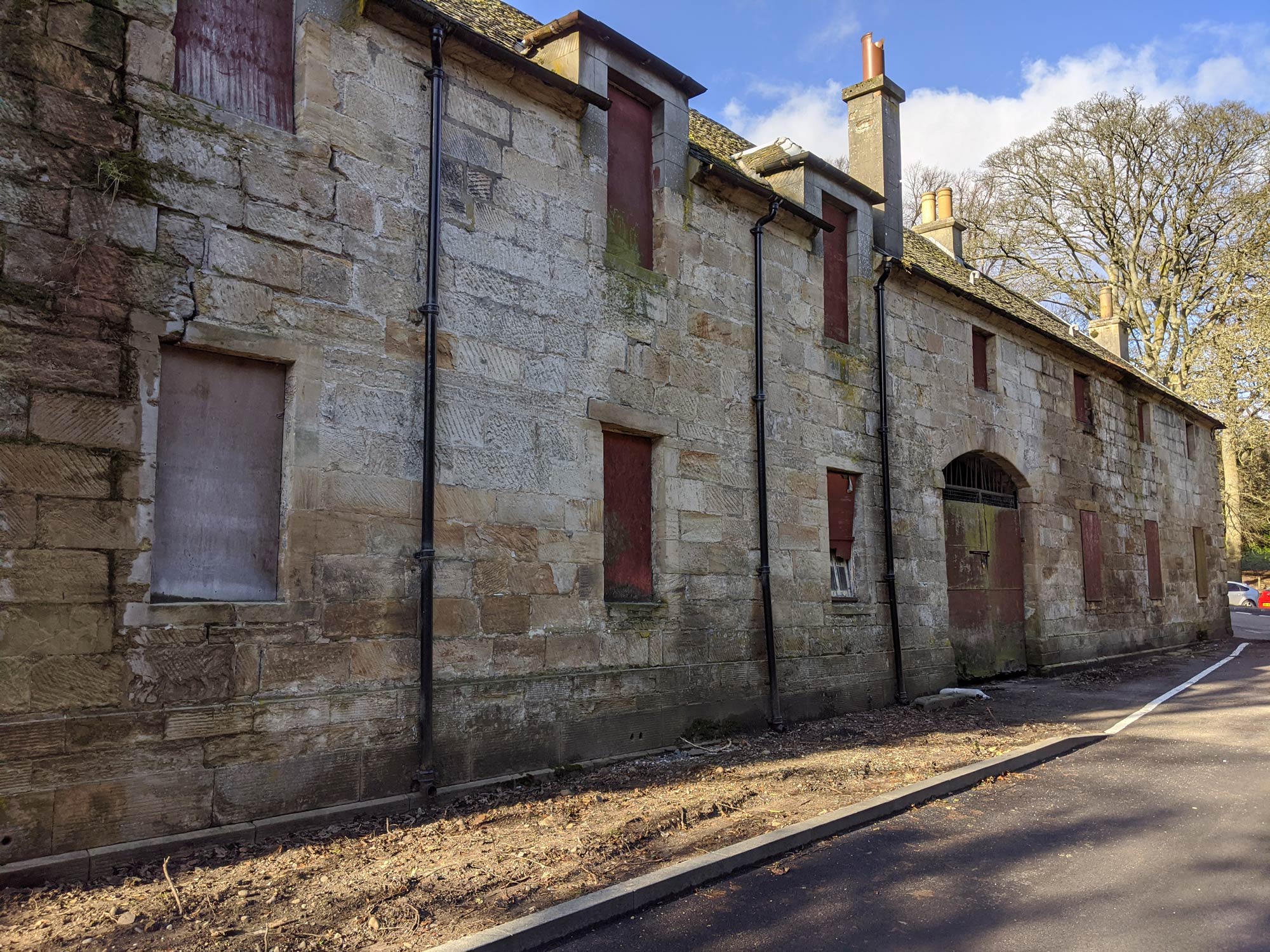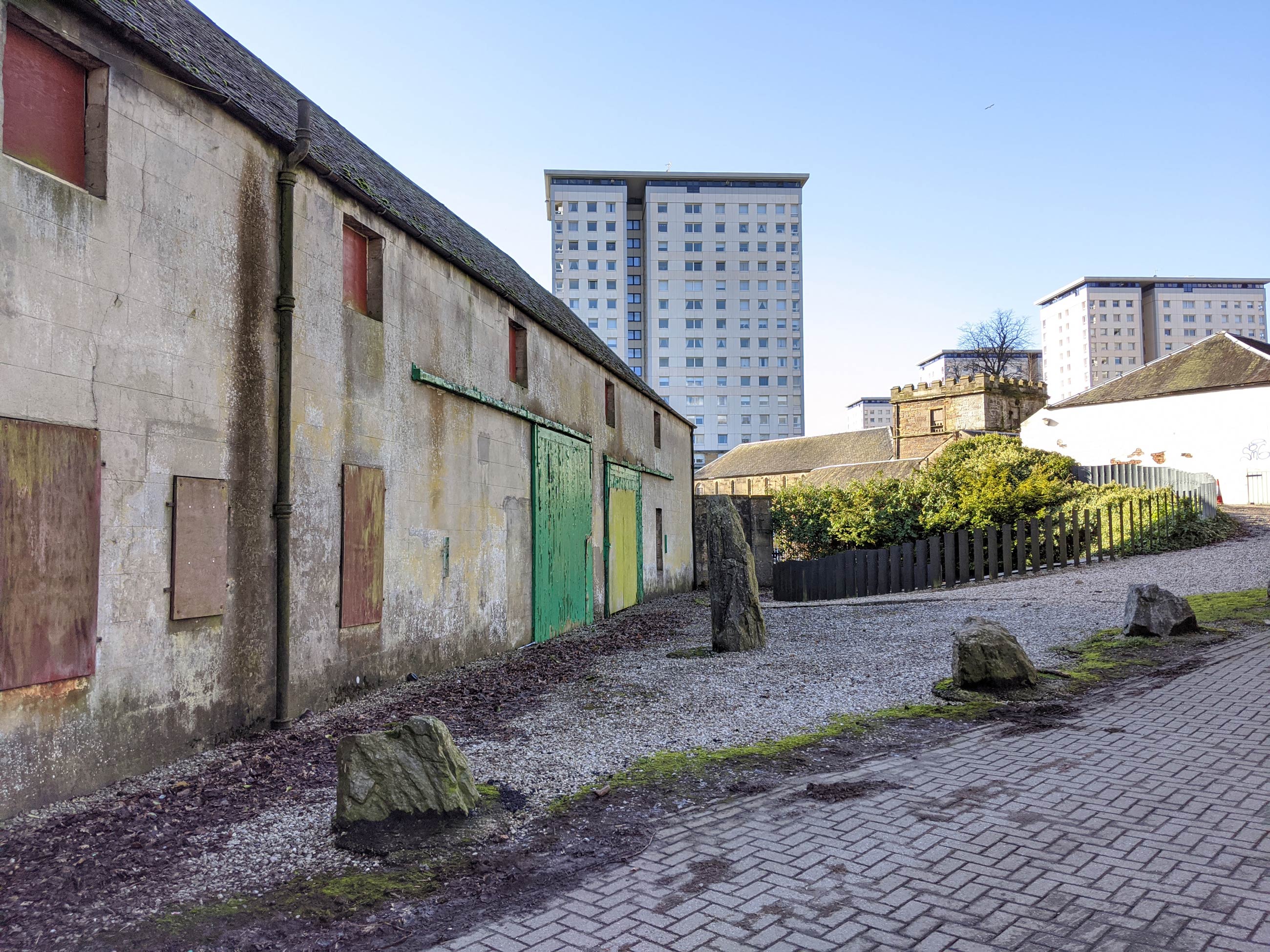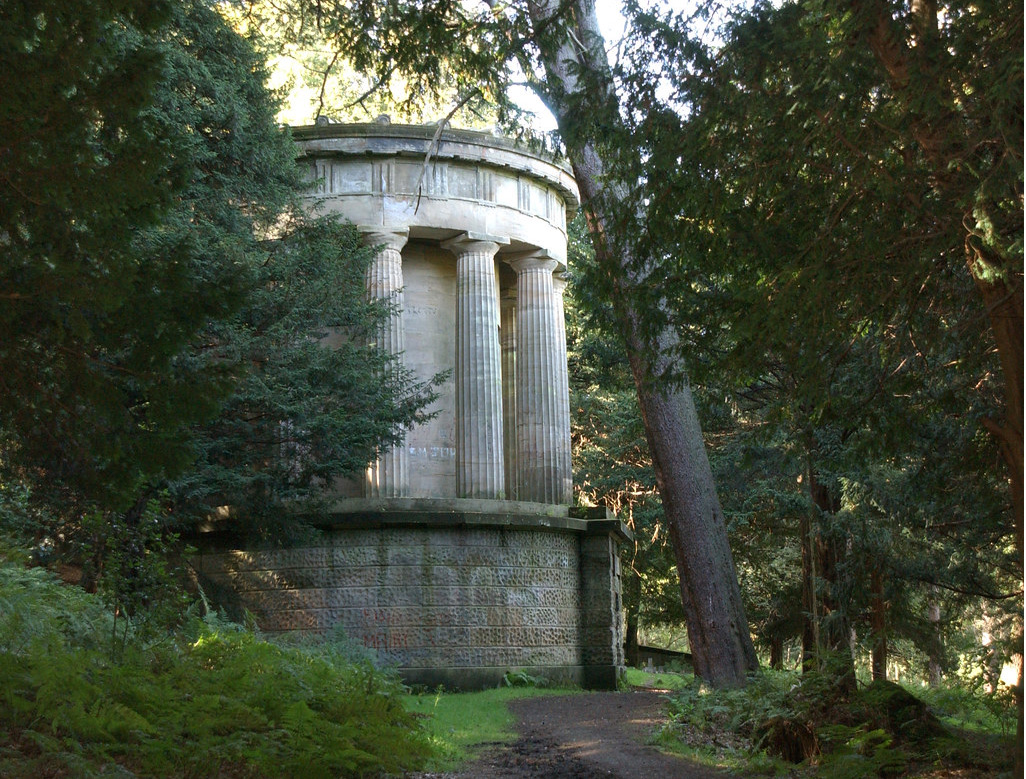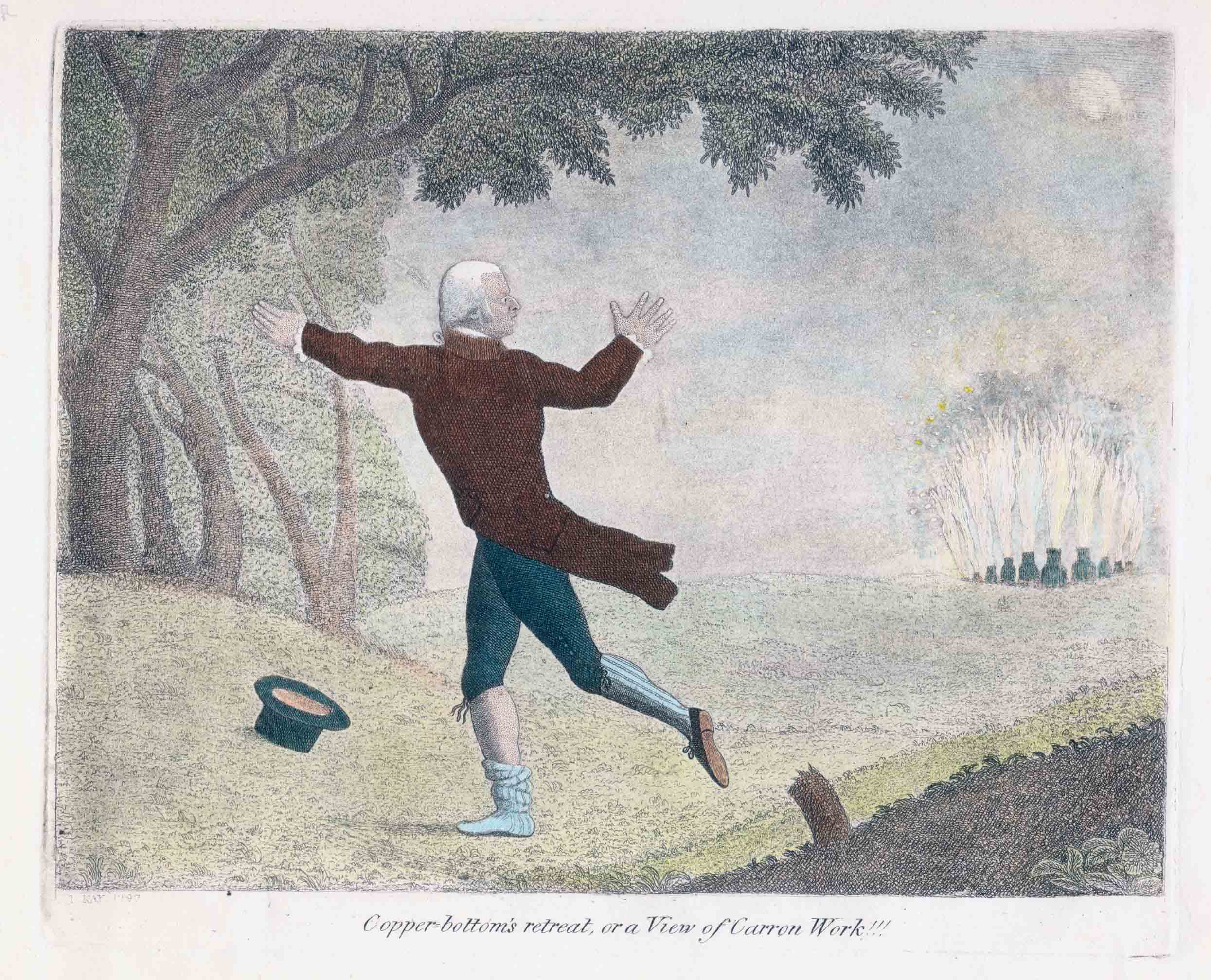Callendar House has several gems scattered across the grounds, including a burial mound, stables, and the Forbes family mausoleum. Here are a few fun facts about each of these sites.
On that July day, Cromwell had had enough.
fields['text']) echo $section->fields['text']; ?>
The Burial Mound
People often refer to the English Civil War and forget that fighting also took place in Scotland between Royalists – loyal to the crown – and Oliver Cromwell’s Roundheads. Cromwell had a garrison in Linlithgow and on the 15th of July 1651 his troops were returning there from a skirmish to the west of Falkirk. Callendar House was held by Lieutenant Galbraith on behalf of the Earl of Callendar who was on the Royalist side. The Callendar House garrison took pot shots at the Roundheads. This had been happening frequently and Cromwell’s troops had previously offered them terms for surrender which had been turned down. On that July day, Cromwell had had enough. He ordered his men to “bring in the big guns” and remove this annoying threat. The Royalist garrison were offered terms for surrender another two times as the bombardment began, cannon balls starting to shatter the walls of the tower house, but twice Galbraith refused, saying he would “rather die than surrender.” He got his wish. The walls were breached during the siege and approximately 62 of the 75 troops died along with some of the locals. To underline his victory Cromwell spent the night in the ruined shell of the house. The dead, Lieutenant Galbraith among them, were presumably buried here, in this burial mound.
The Stables
This area of Callendar Park is the working area, the stables, kennels, coach house, pigeon loft and area where the behind-the-scenes work takes place, much like that which you can see today with the equipment of the maintenance staff. When the Forbes family took over from the Livingstons (see our William “Copperbottom” Forbes story), they splashed a lot of cash on upgrading the estate buildings, adding features such as the pigeon loft with the castellated roof and extending the stables. For a time there was a lint loft over the stables where flax, the main component of linen was stored. William Forbes, nicknamed “Copperbottom”, had a coach in the stables.
The Forbes Mausoleum
The Forbes family mausoleum was built at great expense to the family, for around £110,000 in today’s money. It was designed like an ancient Greek temple with some later Roman architectural flourishes, by Archibald Elliot a well-known architect of the time, who was commissioned and built the mausoleum in 1816. The sandstone it is made of was quarried locally in Brightons just like the stone for Falkirk’s steeple. There is a Greek inscription on the mausoleum which translates as “Mortals; possessions are mortal, and all things pass by us; if not, at any rate we pass them by.” The remains of twenty one members of the Forbes family lie here, including William “Copperbottom” Forbes who was placed here in 1816, a year after his death.
Research conducted by Great Place volunteers, text by Diane Cherry for the Falkirk Explored app, as part of the Callendar Park walking trail.
